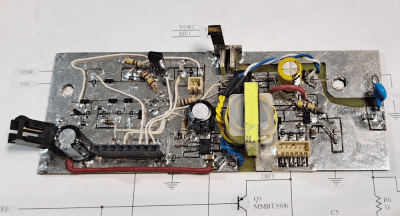We’ve seen many portable laptops using the Raspberry Pi series of boards in the decade-plus since its launch. The appeal of a cheap board that can run a desktop Linux distro without requiring too much battery is hard not to fall for. Over the years, the bar has been raised from a Pi stuck to the back of one of those Motorola netbook accessories, through chunky laptops, to some very svelte and professional-looking machines. A recent example comes from [Michael Mayer], whose Portable Pi 80 is a palmtop design that we’d be happy to take on the road ourselves.
At its heart is a Pi Zero 2, combining as it does a tiny form factor with the useful power of its Pi 3-derived processor. This is mated to a Waveshare 7-inch display, and in the bottom half of the machine sits a 40% mechanical keyboard. Alongside this are a pair of 18650 cells and their associated power modules. The little Arduino, which normally handles the keyboard, has been relocated due to space constraints, which brings us to the case. A project like this one is, in many ways, a task of assembling a set of modules, and it’s in the case that the work here really shines. It’s a 3D-printable case that you can download from Printables, and it’s very nice indeed. As we said, we’d be happy to use one of these.
Portable computing has come a very long way. Often the keyboard can make it or break it.


















